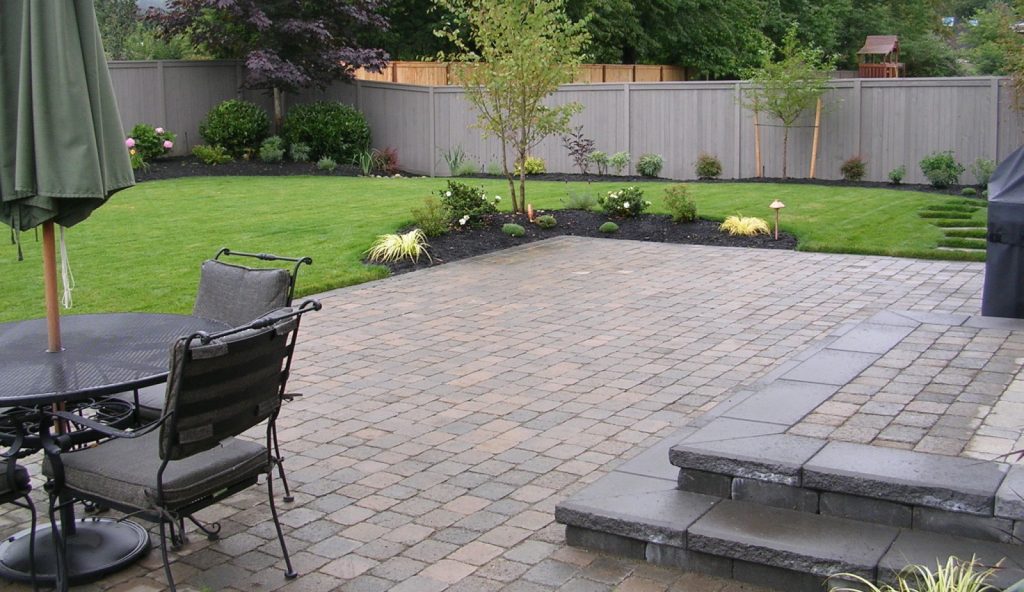Water is essential for many things, it is very insistent – and it can damage driveways, sidewalks and buildings. Asphalt pavement needs to drain properly.
Homeowners usually find out within the first year of occupancy if they have a water drainage problem. This is because seasonality – rainy months vs. dry months, snow and ice vs. hot sunshine – plays differently on the surfaces of your driveway, sidewalks, landscape and home foundation.
Usually, in that first year, if there is a problem you’ll notice it. Low spots in a lawn will be swampy and hard to maintain. Low spots on a driveway or sidewalk not only create inconveniences but also will deteriorate more quickly than other areas. The next time you drive through the dip of a long-existing viaduct, notice how the pavement, unless very new, has cracks and potholes. This is because standing water undermines the base layers of asphalt, which leads to rapid deterioration.
In residential paved areas, pooling water after heavy precipitation is due either to poor design, poor construction, or maybe a settling of the under-soil (which should have been considered by the asphalt contractor as part of the initial design). The fact of the matter is water always needs a place to go, but if a paved surface is impermeable and not properly sloped it will stick around to cause problems.
Which says you can create proper drainage from your home’s asphalt areas in one of two ways – let it soak in, or direct the water to drain elsewhere:
Soak in: While water is sometimes regarded as an enemy to be rid of, it might be useful to trees and other vegetation on your property to allow it to percolate through permeable pavers or a gravel driveway. But note that gravel, while sometimes the perfect aesthetic for a landscaping plan, comes with its own set of maintenance considerations. And, it needs to be on a soil or permeable brick base that is set with a center crown “spine” that drains properly. Also, if the driveway runs flush alongside the building foundation it could cause more problems for the house than it solves.
In cases of hillier terrain, such as when the house sits below the street grade, the equation becomes more complicated. Permeable pavers can accomplish a lot, but a slot drain (a type of trench, usually with a metal or steel grate covering to keep out debris) might also be employed.
Environmentalists encourage exploring the soak-in option as a means of mitigating community-wide storm water flooding (which can cause untreated sewer water to flow into lakes and streams), instead directing the precipitation into the earth’s natural aquifer. Some methods for doing that are to provide a gravity-driven path (via trench drains, dry creeks and French drains) away from the pavement and buildings to rain gardens and bioswales.
Drain elsewhere: The more conventional approach is to whoosh the water away from buildings and off the property entirely. This can be as simple a matter of repaving so that the center crown is properly designed and built. But to ensure the water runoff also goes away from buildings it may be necessary to use trench drains, dry creeks or French drains to lead the flow to the municipal system drains.
In any configuration, the point is to make the water work in your favor instead of against you and your property. That’s what asphalt repair contractors are made for.

